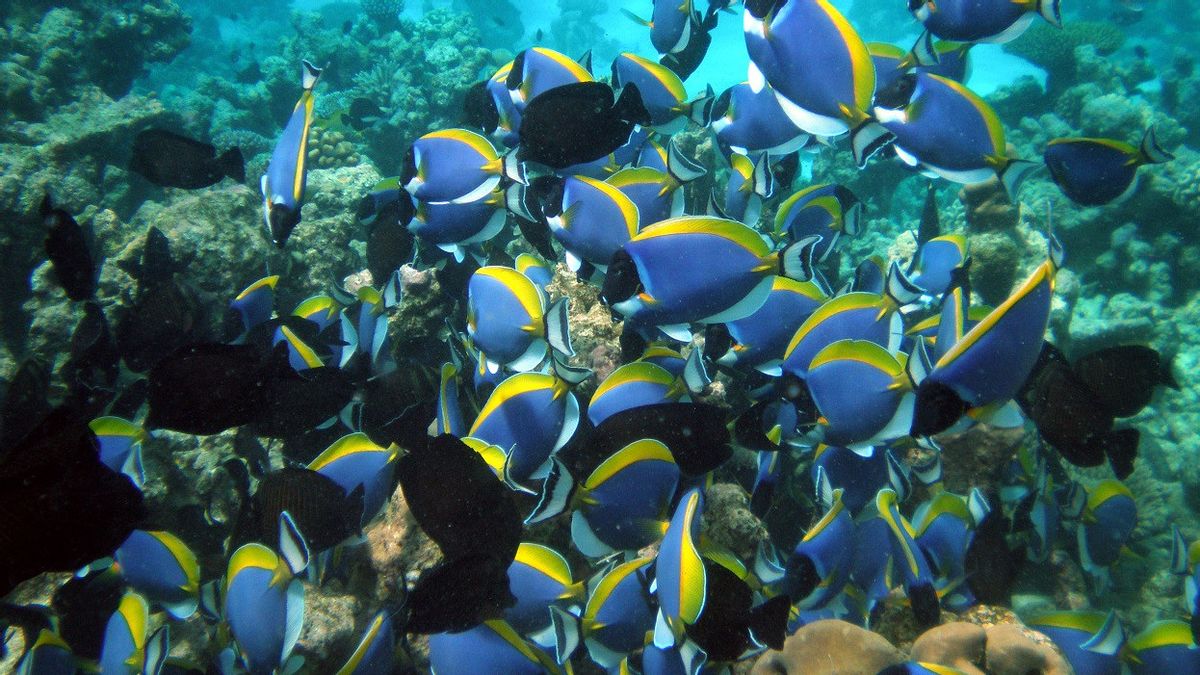JAKARTA - Countries in the world have successfully agreed on a historic agreement to protect the high seas, after going through negotiations for ten years.
The High Seas Treaty aims to help put 30 percent of the oceans into protected areas by 2030, to protect and restore marine life.
This agreement was reached after 38 hours of negotiations, at the United Nations headquarters in New York. Previously, the discussions lasted for years, due to disagreements over funding and fishing rights.
It is known that the last international agreement on marine protection was signed 40 years ago in 1982 - the United Nations Convention on the Law of the Sea (UNCLOS).
The agreement establishes an area called high seas - international waters where all countries have the right to fish, sail and conduct research - but only 1.2 percent of these waters are protected.
Meanwhile, marine life that lives outside this protected area faces risks due to climate change, overfishing, and shipping traffic.
In a recent assessment of global marine species, nearly 10 percent were found to be at risk of extinction, according to the International Union for Conservation of Nature (IUCN).
The Sea Strip Agreement stipulates a sea protected area in the high seas that will help achieve a global goal of protecting 30 percent of the world's oceans, created at a UN biodiversity conference last year.
These areas will limit the number of fishing, shipping routes, and exploration activities such as deep-sea mining, when minerals are taken from the seabed 200 meters or more below the surface.
Meanwhile, environmental groups worry that mining processes can disrupt animal breeding sites, causing noise pollution and toxicity to marine life.
"Any future activity at the bottom of the deep sea will comply with strict environmental regulations and surveillance, to ensure that they are carried out in a sustainable and responsible manner," the International Sea Basin Authority overseeing licensing told the BBC, as quoted March 10.
Meanwhile, Minna Embark, IUCN's director of the Maritime Affairs team, said the main issue was regarding the distribution of marine genetic resources.
Marine genetic resources are biological material from plants and animals in the ocean that can provide benefits to society, such as medicines, industrial processes, and food.
Dr. Robert Blasiak, marine researcher at Stockholm University said the challenge is that no one knows how big the value of marine resources is and therefore how these resources can be divided.
"If you're imagining a high and large-definite widescreen TV, and if only three or four pixels on that giant screen work, that's our knowledge of the deep ocean. So, we've recorded about 230,000 species in the ocean, but there's an estimated to be more than two million," he explained.
Separately, marine campaigners for Greenpeace Nordic Laura Meller, praised countries that have "set aside differences and produced an agreement that allows us to protect oceans, build resilience to climate change, and protect the lives and livelihoods of billions of people".
"This is a historic day for conservation and a sign that in a divided world, protecting nature and humans can defeat geopoliticals," he added.
However, countries around the world are deemed necessary to meet again before officially adopting the agreement, having homework before the agreement can be implemented.
"This will take time to implement. Countries must ratify it (adopt legally) in order to apply. Then there are many institutional bodies such as the Science and Technical Committee that must be formed," said Pews Marine Governance Team Director Liz Karan Trust.
The English, Chinese, Japanese, Arabic, and French versions are automatically generated by the AI. So there may still be inaccuracies in translating, please always see Indonesian as our main language. (system supported by DigitalSiber.id)








